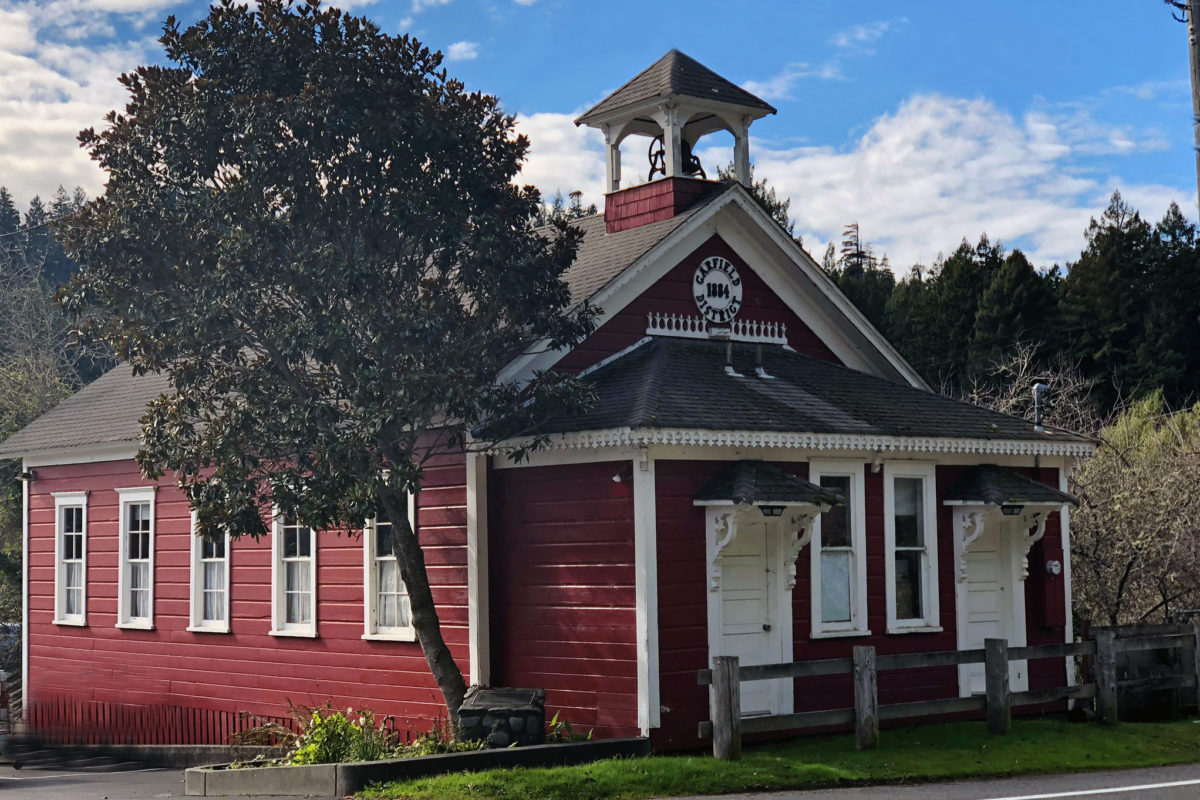
Early Life
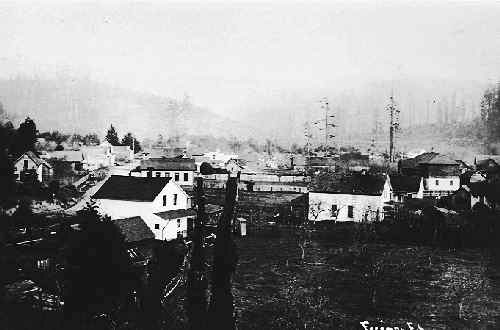
Freshwater or Wrangletown is situated between Eureka and Arcata. In the early days after the arrival of Europeans, one had to cross dangerous mountain paths or travel by boat over treacherous waters to get here. The first colonizers came from France, Switzerland and New Brunswick and last, but not least, New England and the south.
Freshwater got its name because the Eureka Slough was salty but the adjacent slough was fresh water. Wrangletown was established in the 1870s but the area known as Freshwater has had several names over the years. It has been called Garfield, after the school district, Lambertville, after the Lambert family, and Hardscrabble, after the fist fights.
Wrangletown is the name that has lasted the longest but the origin of the name is not clear. It has been said that two Freshwater women that were heads of their households were strong-willed and didn’t fail to let their minds be known. In the small community, their paths crossed and it was soon the talk of the village that these two women couldn’t get together without confrontation. This continued for as long as they lived in the village. A passing stagecoach driver announced in public that the place should be called Wrangletown.
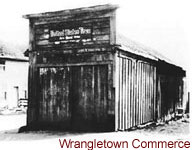
Wrangletown was cleared by the loggers and small cabins were built around the store that is still there today. The town grew after several years to include hotels, stables, a blacksmith, a restaurant, a bowling alley, a tailor, a dance hall, a shoemaker, a barber, a butcher, a candy shop, two grocers, many saloons, post office, and a school. By the middle of the 1880s Wrangletown was a booming town.
Early Industries
There were two main industries in early Wrangletown, logging and farming. There was one large logging business run by the Excelsior Company. This logging industry employed from 300 to 1,500 men at a time. There were also several family operated mills run by George Pinkerton, Tom Cloney, and several more up Graham Gulch and McCready Gulch. The loggers had their work cut out for them as the average tree took about a day to fall, but some would take several days to fall.
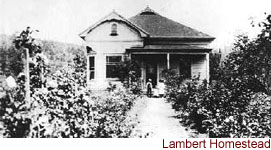
There were also several farming operations at this time. The largest obstacle for the farmers at first was the large tree stumps left behind by the loggers. Some of the stumps were five to twenty feet in diameter! Once the land was clear, the farmer’s efforts were rewarded from the rich soil they produced. Some farmers grew hay, potatoes, corn, carrots, strawberries, grapes, and apples. Many people had milking cows. Many of the farm owners did not put up fences to keep the cattle in. Once in a while a cow would wander off and the owner would have to go look for her! Some people would go around and deliver a quart of milk to each person. John Spinas had this job. He worked for the Lambert’s farm. There was one lady that would accuse Mr. Spinas of not giving her a full quart of milk almost on a daily basis. John would try to explain to the lady that his jar was a quart size and that he always filled it to the brim, but she was never convinced.
The Hunting Bear
A good hunter would usually have a good hunting dog. A bobcat or a bear would be trapped and used to train the dog. Once, a large bear cub was trapped several miles from Freshwater. Henry Anderson, Harry Steinberg, Vic Loquist, and Ray Cole all went to bring the bear back to town for dog training. The men tied the bear’s feet and carried it back to town. They carried the bear behind Hughes’ blacksmith shop across the street from the store. They put a horse collar on the bear and chained him to a tree stump. Dave Dillon, anxious to begin the training, went to get his dog. This particular dog must have been young, stupid, or both because it walked right up to the bear. The bear, no doubt, was in very bad humor in his inhospitable circumstances. He proceeded to whack the dog a good one on the head sending it howling all the way home. From that point on, bear hunting was not the dog’s specialty.
After that incident, a shepherd was bringing his flock down from Kneeland to the market. He was unaware that the bear was chained up on the hill and as the sheep approached, the bear let out a loud roar and frightened all of the sheep. The shepherd was left to look for all of his flock wondering why anyone would chain a bear up in the middle of town. A few days later, G. W. Hughes and some other men took pity on the bear and set him free.
Garfield School
By 1884 there were enough families in Wrangletown to establish a school. This was the year the Little Red Schoolhouse was built and the beginning of Garfield School District. When the school was first built it had no paint at all. When it finally was painted, the school was painted white, not red!
School was a very important time. Many of the families had come to California from Europe and had to learn English from scratch. Classes started on the first of August and ended May 25th. School began at 9:00 AM and ended at 4:00 PM. The only holidays they had were Easter and Christmas. The school had 30 to 70 students and one teacher to handle them all. When it was time to go out or into the school, the boys would line up on one side and the girls would line up on the other side and go in.
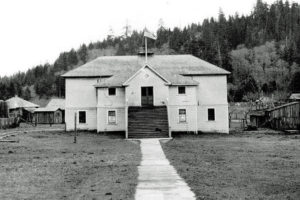
In 1904 the attendance had grown so much that a larger, two-story, four room school house was built for $3,450.00. The larger two-room schoolhouse was eventually torn down in the 1970s and sold for scrap.
The Little Red Schoolhouse still remains and on April 23, 1994, the Little Red Schoolhouse was dedicated as a historical landmark by the Native Sons of the Golden West. Today Garfield School has over 70 students attending and has four classrooms. The rope is still pulled each morning to ring the original bell that calls the children to school.
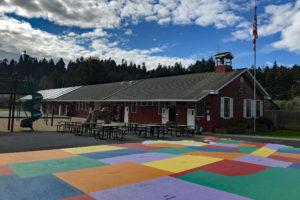
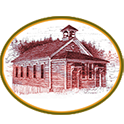 Garfield
Garfield